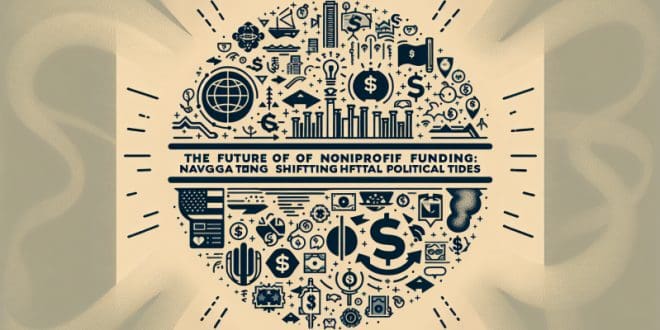In the ever-evolving landscape of nonprofit funding, one of the most significant variables to influence grant availability is the political climate. Changes in government, policy shifts, and fluctuations in priorities can all dramatically affect both the availability and the direction of financial support for nonprofit organizations. As such, it’s increasingly vital for nonprofits to develop a politically agile funding strategy to steadfastly navigate these choppy waters and maintain financial sustainability.
To begin, we must understand the relationship between political change and grant availability. When a new administration takes office, or when there’s a shift in legislative power, the priorities for funding can change overnight. Programs once heavily funded may find their streams dry up, while new initiatives may blossom. Navigating these changes requires an astute understanding of the political landscape and an ability to predict how changes may affect funding.
Diversifying income streams is no longer simply an option for nonprofits; it is essential for resilience. Organizations that rely too heavily on a single source of funding are particularly vulnerable to political shifts. Exploring alternative revenue streams such as corporate partnerships, membership fees, fundraising events, social enterprises, and individual donations is one way to protect against the ebbs and flows of grant funding.
Cultivating bipartisan support is equally important. Nonprofit leaders need to articulate the nonpartisan value of their work and build relationships across the political spectrum. By engaging with all stakeholders and demonstrating the impact of their work beyond political divisions, nonprofits can safeguard their interests and maintain a broad base of support regardless of the political landscape.
Advocacy work is another critical element. Nonprofits should not be passive recipients of funding; they should engage proactively with policymakers to shape the funding agenda. By advocating for policies that support their cause and the overall nonprofit sector, organizations can influence their funding environment to their benefit.
The implications of a heavy reliance on grants during politically volatile times must be carefully considered. Organizations need to be nimble, able to adjust their strategies and operations in response to funding shifts. This may require tough decisions like scaling back programs or shifting focus areas.
Real-world case studies of organizations that have successfully navigated these challenges can provide a blueprint for others. For instance, consider a community health nonprofit that faced funding cuts due to policy changes but diversified its revenue through local partnerships and a sliding-scale fee service, ultimately sustaining its operations and even expanding services in the long run.
In conclusion, the future of nonprofit funding is not solely in the hands of the political winds, but rather in the hands of the organizations themselves. By remaining politically agile, diversifying income streams, cultivating bipartisan support, and engaging in advocacy, nonprofits can chart a course to financial sustainability an犀利士
d continued impact, no matter the political climate. It’s time for nonprofit leaders to think strategically and act decisively. The future of your funding – and your impact – depends on it.
 Grants Club Community
Grants Club Community







